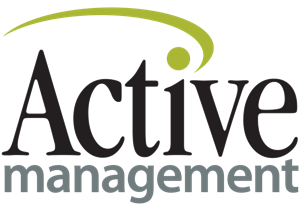Top 10 Fitness Trends for 2022
Predicted by the Australian Institute of Fitness
The top 10 fitness trend predictions for 2022 were released today by the Australian Institute of Fitness (AIF), forecasting the movements, methods and must-haves that will dominate the brave new world of fitness next year.
Conducted by Australia’s leading and longest established fitness training organisation, the survey of AIF’s top industry experts and professionals found the biggest fitness trends for 2022 will be Wearable Technology (#1), Exercise is Medicine (#2) and Online Training (#3) – the highest new entry on this year’s edition of the list.
High Intensity Interval Training (HIIT) followed at #4, along with Health and Wellness Coaching (#5) and Hybrid Gym Offerings (virtual/in person) (#6) – another new addition to the list. Rounding out the top 10 were Functional Fitness Training (#7), Mobile Exercise Apps (#8), Outdoor Activities (#9) and Mind and Body Training (#10).
“Fitness trends have changed and accelerated – especially over the past year – as industry and consumers have embedded the way they engage with fitness in the post-pandemic world. Whereas in 2020, many of us were reactively finding our feet, this year we’ve been able to fine-tune our approaches and lean into what works best for us – even as things have continually shifted. Fitness professionals, establishments and consumers have “found their grooves” so to speak and, with this, have come many exciting reimagined ways to access and deliver fitness in 2022 and beyond,” said Australian Institute of Fitness CEO, Steve Pettit.
“As restrictions and lockdowns hopefully become a thing of the past in 2022, it is unlikely we’ll see things return to the way they were before the onset of COVID-19. Instead, a combination of old meets new will become the norm as technology continues to drive evolutions in gym and PT offerings. Increasingly, we will likely see the fitness industry tailor bespoke programs, experiences and services to consumers’ individual wants and needs through a mix of in-gym, online and hybrid models. Fitness consumers will gain the flexibility to experience more of what they want – when, how and where they want it, while the fitness industry will be able to tap new opportunities through clever diversification, personalisation and meeting consumers where they want to train.
“We will also likely continue to see fitness shift further beyond aesthetics and weight loss towards deeper areas of holistic health and wellbeing. The key role that fitness can play in broader health outcomes – especially mental health, chronic disease prevention and management, and evolving conditions like Long-COVID recovery, will all be key areas for Australia’s fitness industry to engage with.”
AIF’s top 10 fitness trends for 2022
- Wearable Technology
- Exercise is Medicine
- Online Training
- High Intensity Interval Training (HIIT)
- Health and Wellness Coaching
- Hybrid Gym Offerings
- Functional Fitness Training
- Mobile Exercise Apps
- Outdoor Activities
- Mind and Body Training
The AIF also predicted several additional key trends to gain momentum in Australia next year, including: increasing demand for highly skilled mobile PTs; growing focus on pandemic related health conditions (for example, Long-COVID); micro workouts; High Intensity Resistance Training (HIRT) and virtual fitness (including augmented reality).
AIF’s fitness trends for 2022 – 11-20
- Lifestyle Medicine
- Virtual Fitness (including Augmented Reality)
- High Hygiene Standards for Gyms
- Mindfulness in Training
- Group Training
- Personal Training
- High Intensity Resistance Training (HIRT)
- Exercise for Weight Loss
- Micro Workouts
- Bodyweight Training
Notable Trends in Focus
Wearable Technology (#1)
For the second year in a row, wearable technology topped the survey rankings. Commenting on this phenomenon, AIF CEO, Steve Pettit, said:
“Health and fitness wearables continue to experience rapid growth. The personalised data that these devices provide allows for people of all ages and fitness levels to take control and improve their health, fitness and general well-being like never before. Their ability to not only track our bodily responses to energy expenditure, but also discover what is going on inside the body, is quite incredible.
“Many users still don’t understand the full capabilities of health and fitness wearables, including how to effectively utilise heart rate training zones, which provides real-time feedback on the intensity and energy systems targeted during a session. As such, their popularity will likely continue to grow next year as the technology further evolves and consumers become more adept at utilising all they have to offer.
“In 2022, we expect to see brands like Apple and Garmin continue to dominate all segments of the market – appealing to everyday fitness and leisure consumers, as well as gym junkies and fitness professionals in areas of programming, training and recovery.”
Exercise is Medicine (#2)
Exercise is Medicine was voted the second biggest trend for 2022 – maintaining its position from last year’s ranking. Exercise is Medicine is an integrated healthcare model that empowers primary healthcare providers to effectively counsel patients about physical activity leading to sustained behaviour change, and to refer patients to appropriately trained health and fitness professionals to deliver exercise treatment.
“While many of us thought we would leave COVID in the rearview mirror of 2020, the reality for millions of Australians ended up being continued lockdowns, sedentary lifestyles, and physical and mental isolation. These factors wreaked havoc on the holistic wellbeing of many people, and boosted risks associated with chronic disease, mental illness and injuries,” said AIF’s Head of Compliance and Training, Kate Kraschnefski.
“We have also started to see Australians experiencing Long-COVID, who report a myriad of symptoms including fatigue, dizziness, shortness of breath, brain fog, memory loss, loss of taste and smell, numbness and muscle spasms. In 2022, the fitness industry will look to work alongside healthcare providers to develop programs to assist recovery from Long-COVID, as well as proactive programs to improve overall health, fitness and immunity.
“There will also likely be collaboration between medical industry, health care providers and fitness professionals to start serious and consequential work as Australia tries to recover and ‘live with’ the virus. This work will arguably be most effective by targeting both general health and mental health.”
Online Training (#3)
“During the early stages of the pandemic, fitness organisations and trainers saw a need to quickly evolve and expand into the online space. Now, almost two years on, consumers have become accustomed to working out anytime they like, wherever they like. The rise of live streaming and on-demand offerings, including online apps and virtual PTs, will likely continue their upward trajectory as consumers prioritise flexibility and variety in fitness.
“Key online fitness players to watch in 2022 include LES MILLS On Demand; Peloton; SWEAT app; Lululemon’s Mirror hardware; iFit/NordicTrack; Apple Fitness+; Emily Skye FIT; Keep it Cleaner; and KIXXFIT,” said AIF CEO, Steve Pettit.
Health and Wellness Coaching (#5)
“Now, more than ever, we are seeing many Australians take a proactive rather than reactive approach to holistic health and fitness. Consumers not only want guidance on exercise and fitness, but also things like food, goal setting and happiness. Next year, In the new COVID-normal world where routines and priorities are being adapted and re-established, health and wellness coaches will have a key role to play in helping people achieve what they want out of life,” said AIF’s Head of Compliance and Training, Kate Kraschnefski.
Hybrid Gyms Offerings (In-gym/Virtual) (#6)
“This year, we have seen many consumers itching to get back to physical gyms. They have missed having access to the latest and greatest equipment, face-to-face trainer expertise, and the sense of community that comes with working out alongside others,” said AIF General Manager of Training, Brodie Hicks.
“However, as our lifestyles and general health concerns have continually shifted, the ability to train remotely and flexibly has gained appeal. Next year, many Australians will continue to work part-time from home, and the physical gym may not always form part of their natural daily schedule. There may also be people who are hesitant to train in physical gym spaces at certain times, due to potential localised COVID outbreaks and/or if they’re visiting high-risk family and friends.
“Given these factors, it is likely we’ll increasingly see fitness establishments roll out hybrid offerings with a mix of in-gym, virtual live and on-demand products. This will allow gyms to snap up consumers with varying preferences across the market, while delivering fitness enthusiasts the expanded choice and flexibility they demand.”
Mind and Body Training (#10)
“For many people, incorporating mindfulness and meditation into training and regular routines has become essential since the onset of the pandemic. A growing number of Australians are opting to work out for not only physical exercise, but also mental relaxation and reflection.
“The practices of yoga, Pilates, breathing work, mindfulness, meditation and broader mental health training will continue to grow in popularity in 2022 as consumers seek out the psychological and mental health benefits that come with movement and body work. As hard as it can be to find motivation when we are stressed and tired, it is when we are experiencing these feelings that mind and body training can deliver the most benefit,” said AIF’s Head of Compliance and Training, Kate Kraschnefski.
High Intensity Resistance Training (HIRT) (#17)
“In recent years, High-Intensity Interval Training (HIIT) has become an extremely popular mode of training due to its varying fitness benefits, flexibility, accessibility and variety,” said AIF’s Head of Compliance and Training, Kate Kraschnefski.
“If the pandemic has taught us one thing, it’s that it’s OK to slow down, and that is exactly what has developed in the form of High Intensity Resistance Training (HIRT). HIRT brings strength training into HIIT, slowing things down and giving participants the ability to put more intention behind their movement. Form and strength become the focus while still achieving a solid calorie burn.
“HIRT will likely see growing uptake in 2022, especially among women who have traditionally been less inclined to engage with strength training. HIRT actually reduces the stress on your body and central nervous system, allowing for extended rest periods and lessening fatigue. It is also a great option for people who don’t like HIIT training, given that it delivers many of the same benefits – but with less plyometrics, hardcore cardio and pressure on bones and joints.”
Micro Workouts (#19)
“Micro workouts exploded onto the scene over the past year, as many of us battled increased inactivity due to lockdowns, shifting schedules and sedentary lifestyles. These short, high-intensity workouts are a great way to disrupt your regular routine and combat the health hazard of prolonged stillness.
“Although lockdowns are hopefully a thing of yesterday, many Australians are now busier than ever, so having the option to do short, sharp workouts in small windows of time – but still achieve caloric and cardiovascular benefits – is highly appealing. Every effort – however modest – can be a big win. Because the sessions are quick – typically lasting between 4-12 minutes – they are fantastic for individuals who are time-poor but are still looking to kick their health and fitness goals.” said AIF General Manager of Training, Brodie Hicks.

Justin is the Managing Director of Active Management, which he began January 2004. He offers coaching to businesses worldwide in everything from start up and design to marketing and sales systems. Justin also facilitates four Australian and New Zealand ‘fitness industry roundtables’ events, which allows him to see a huge cross section of business models.
